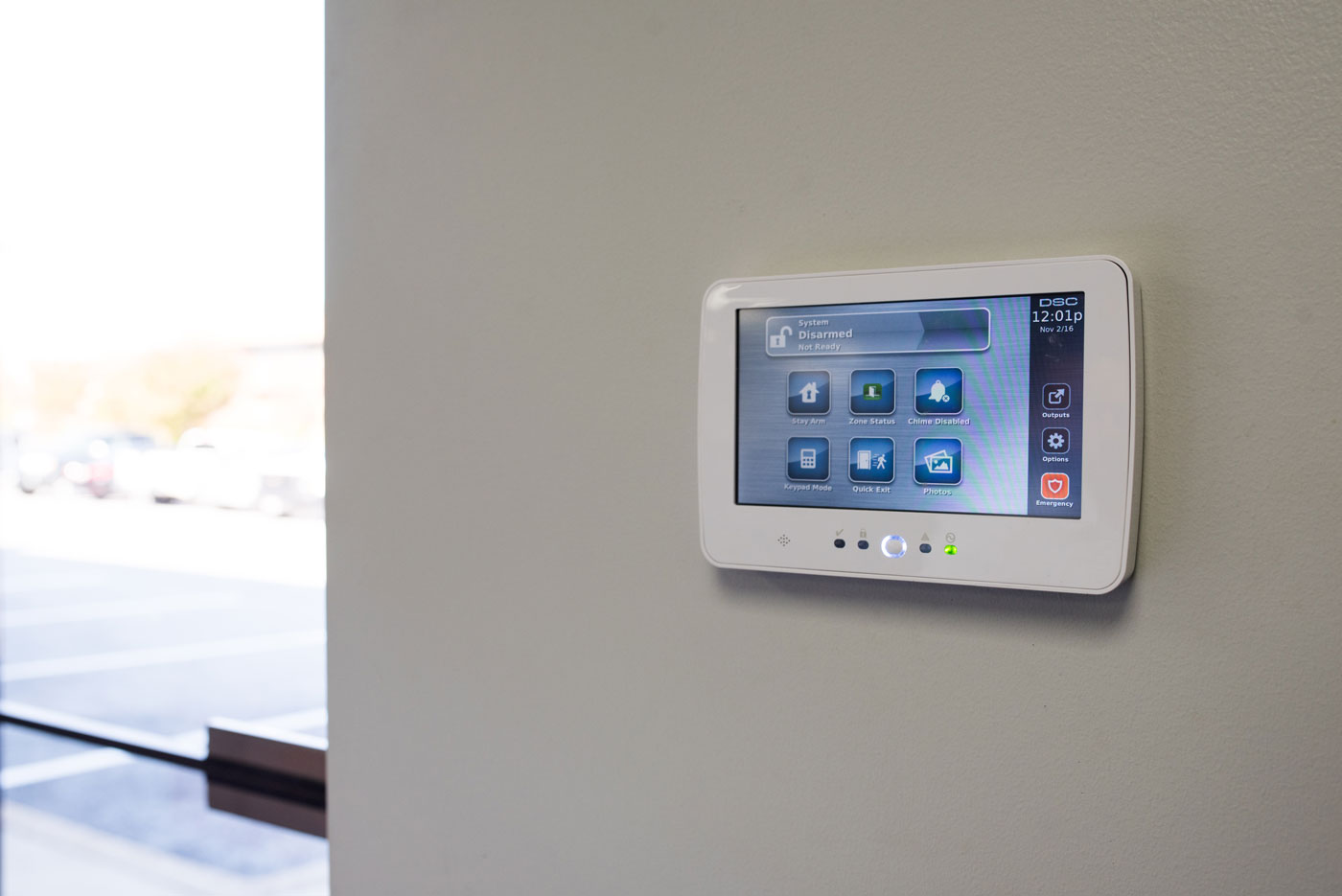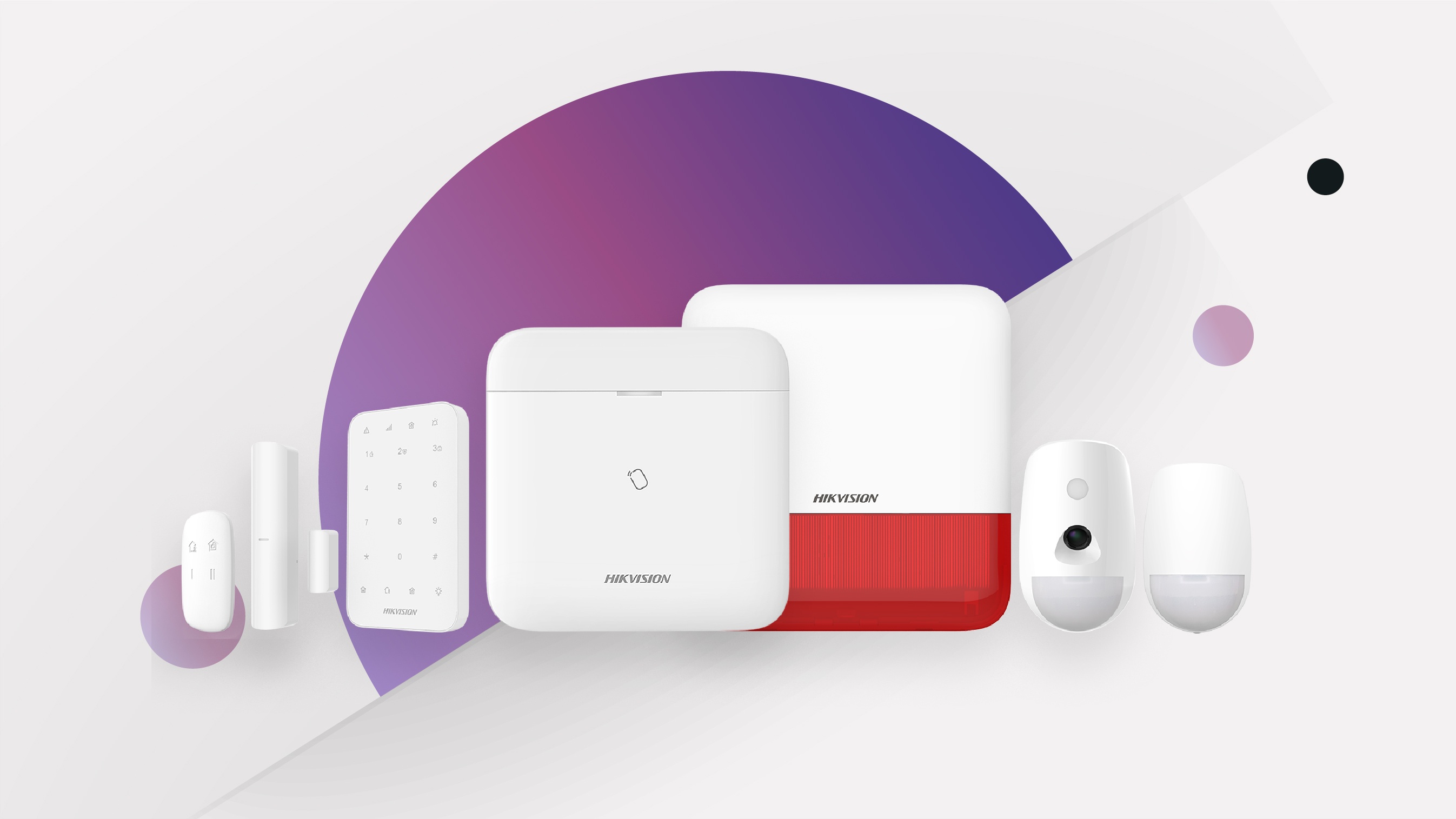Home>Home Security and Surveillance>What Is The Host-Based Intrusion Detection Tool Integrated Into Security Onion?


Home Security and Surveillance
What Is The Host-Based Intrusion Detection Tool Integrated Into Security Onion?
Modified: March 6, 2024
Learn about the host-based intrusion detection tool integrated into Security Onion for enhanced home security and surveillance.
(Many of the links in this article redirect to a specific reviewed product. Your purchase of these products through affiliate links helps to generate commission for Storables.com, at no extra cost. Learn more)
Introduction
Welcome to the world of home security and surveillance! In today’s rapidly evolving digital landscape, it is essential to prioritize the safety and protection of our homes. Fortunately, advancements in technology have given us innovative solutions to ensure the security of our living spaces. One such solution is the integration of host-based intrusion detection tools into home security systems.
Host-based intrusion detection tools play a crucial role in safeguarding our homes from potential threats and intrusions. By actively monitoring the activity on individual devices within a network, these tools act as the first line of defense against unauthorized access attempts and suspicious activities.
One notable host-based intrusion detection tool that has gained popularity among home security enthusiasts is the one integrated into Security Onion. In this article, we will explore the features, installation process, and usage of this tool to provide you with a comprehensive understanding of its capabilities and benefits.
Whether you are a novice in the world of home security or an experienced user looking to enhance your existing system, this article will serve as your ultimate guide to host-based intrusion detection in Security Onion.
So, buckle up and let’s dive into the exciting realm of home security and surveillance!
Key Takeaways:
- Host-based intrusion detection tools in Security Onion actively monitor individual devices in your home network, detecting potential threats and alerting you in real-time. They provide an extra layer of protection for your digital assets.
- Setting up alerts and notifications is crucial for timely response to security incidents. Regular monitoring and analysis of intrusion detection data help maintain the security of your home network, ensuring peace of mind.
What is a Host-Based Intrusion Detection Tool?
In today’s interconnected world, the threat of cyber attacks and unauthorized access to our devices and networks is a constant concern. To mitigate these risks, various security measures are implemented, and one of the most effective tools in this regard is a host-based intrusion detection tool.
A host-based intrusion detection tool is a software application that monitors and analyzes the activity and behavior of individual devices within a network. It acts as a surveillance system for your home’s computing devices, including computers, laptops, smartphones, and Internet of Things (IoT) devices, constantly looking for any suspicious or malicious activities.
Unlike network-based intrusion detection systems, which monitor traffic flowing through network devices, host-based intrusion detection tools focus specifically on the activity happening on a single host. They examine log files, track system calls, and analyze network connections to identify any signs of intrusion or malicious behavior.
The primary objective of a host-based intrusion detection tool is to detect and alert users about unauthorized access attempts, malware infections, unusual network activity, and other security breaches. By identifying these potential threats in real-time, users can take immediate action to prevent further damage and protect their devices and data.
Host-based intrusion detection tools employ a variety of techniques to detect threats. They use pattern matching algorithms to compare observed activities with known attack patterns. They also rely on anomaly detection, which identifies deviations from normal behavior and flags them as potential intrusions.
In addition to intrusion detection, host-based intrusion detection tools often include intrusion prevention capabilities. This means that they not only detect and alert users about potential threats but also take proactive measures to prevent those threats from causing harm. These measures can include blocking suspicious network connections, terminating processes associated with malicious activities, or isolating compromised devices from the network.
Overall, a host-based intrusion detection tool is a critical component of any comprehensive home security system. It adds an extra layer of protection by actively monitoring the behavior of individual devices and detecting any signs of unauthorized access or malicious activities. By promptly notifying users about potential threats, these tools enable homeowners to take swift action and keep their digital assets secure.
Overview of Security Onion
Security Onion is a powerful open-source platform designed to provide comprehensive security monitoring and network intrusion detection capabilities. It integrates various tools and technologies into a single solution, enabling users to monitor, analyze, and respond to potential security threats effectively.
At its core, Security Onion is built on the popular Ubuntu Linux operating system. It incorporates several key components, including Elasticsearch, Logstash, Kibana, and Suricata, to deliver a seamless and robust security monitoring experience.
One of the key features of Security Onion is its ability to capture and analyze network traffic in near real-time. By using network sensors, such as SPAN ports or network taps, Security Onion can monitor all network activity, allowing users to identify potential security breaches and suspicious behavior.
The Elasticsearch component of Security Onion acts as a search and analytics engine, storing and indexing all collected network data. It provides powerful search capabilities, enabling users to quickly query and retrieve specific information from the vast amounts of collected data.
Logstash is responsible for collecting, parsing, and enriching the collected network data. It transforms raw data into a standardized format, making it easier to analyze and visualize. Logstash also supports the integration of various data sources, such as firewall logs, system logs, and intrusion detection system (IDS) logs, into the Security Onion platform.
Kibana serves as the web-based graphical user interface for Security Onion. It provides users with a visually appealing and intuitive interface to visualize and explore the analyzed data. Through customizable dashboards, charts, and graphs, users can gain valuable insights into their network’s security posture and quickly identify potential threats.
Suricata is an open-source intrusion detection and prevention system that is tightly integrated into Security Onion. It monitors network traffic and analyzes it against a vast set of pre-defined rules and signatures to detect potential intrusion attempts and malicious activities. Suricata can detect a wide range of threats, including malware, network attacks, and suspicious network behavior, helping users to proactively defend their network against potential threats.
In addition to its robust monitoring and detection capabilities, Security Onion also supports the integration of host-based intrusion detection tools. This feature allows users to monitor and analyze the activities of individual devices within their network, providing a comprehensive security solution.
Overall, Security Onion is a versatile and feature-rich platform that offers a wide range of security monitoring and intrusion detection functionalities. It provides users with the tools and capabilities needed to effectively defend against potential threats and ensure the security of their network and devices.
Features of the Host-Based Intrusion Detection Tool in Security Onion
The host-based intrusion detection tool integrated into Security Onion offers a range of features and capabilities to enhance the security of your home network. Let’s take a closer look at some of these key features:
- Real-Time Monitoring: The host-based intrusion detection tool constantly monitors the activities and behaviors of individual devices within your network in real-time. It captures and analyzes network traffic, system logs, and processes running on each host, providing a comprehensive view of potential security threats.
- Behavioral Analysis: The tool employs advanced pattern matching and anomaly detection algorithms to identify suspicious behavior and potential intrusions. It compares the observed activities on each host with known attack patterns and detects any deviations from normal behavior, helping to identify and prevent security breaches.
- Signature-based Detection: The intrusion detection tool uses a vast database of signatures and rules to identify known malware, viruses, and attack patterns. It compares network traffic and system activity against these signatures, enabling it to quickly detect and alert you about potential threats.
- File Integrity Monitoring: The tool monitors critical system files and directories for any unauthorized modifications or tampering. Any changes to these files, whether accidental or malicious, are promptly flagged and reported, allowing you to take immediate action to mitigate potential risks.
- Centralized Management: Security Onion provides a centralized management console, where you can configure and monitor the host-based intrusion detection tool for all devices in your network. This allows for easy management and streamlined control of your home security system.
- Alerts and Notifications: The intrusion detection tool generates real-time alerts and notifications whenever suspicious activities or potential intrusions are detected. These alerts can be delivered via email, SMS, or other notification methods, ensuring that you are promptly informed about any security-related events.
- Granular Reporting: Security Onion offers detailed and customizable reporting capabilities, allowing you to generate comprehensive reports about the security status and incidents within your network. These reports provide valuable insights into potential vulnerabilities and help in identifying areas that require additional attention or improvement.
- Integration with Other Security Tools: The host-based intrusion detection tool seamlessly integrates with other security tools within the Security Onion platform, including network-based intrusion detection systems and log analysis tools. This integration enhances the overall effectiveness of your home security system and provides a holistic view of potential threats.
The features mentioned above are just a glimpse of what the host-based intrusion detection tool in Security Onion has to offer. By leveraging these powerful features, you can ensure the security and integrity of your home network, detect potential threats in real-time, and take proactive measures to protect your devices and data.
Installation and Configuration Process
Installing and configuring the host-based intrusion detection tool in Security Onion is a straightforward process. Here, we will guide you through the essential steps to get started:
- Step 1: Download Security Onion: Visit the official Security Onion website and download the latest version of the software. Choose the appropriate installation package based on your operating system.
- Step 2: Install Security Onion: Follow the installation instructions provided by the Security Onion documentation. The installation process typically involves running the installation package and following the prompts on the screen. Make sure to select the necessary components, including the host-based intrusion detection tool, during the installation.
- Step 3: Configure Network Settings: After the installation is complete, you will need to configure the network settings for Security Onion. This involves providing network interface information and configuring IP addresses, subnet masks, and gateway settings. Follow the instructions provided by the Security Onion documentation for detailed guidance.
- Step 4: Set Up Host-Based Intrusion Detection: Once the basic network configuration is done, proceed to set up the host-based intrusion detection tool. This typically involves selecting the appropriate settings for logging, monitoring, and rules. Customize the configuration according to your specific security requirements.
- Step 5: Test the Detection Capabilities: After configuring the tool, it is essential to test its detection capabilities to ensure that it is working correctly. Use known attack patterns or generate simulated network activity to see if the intrusion detection tool can identify and alert you about potential threats.
- Step 6: Fine-Tune the Configuration: As you start using the host-based intrusion detection tool in Security Onion, you may come across false positives or find the need to customize certain settings. Take the time to fine-tune the configuration based on your specific environment. Adjust the rules, logging levels, and alert thresholds to optimize the tool’s performance.
- Step 7: Regularly Update and Maintain: Keep your host-based intrusion detection tool up-to-date by regularly applying software updates and security patches. Also, regularly review and update the rule sets to ensure the tool remains effective against the latest threats. Stay vigilant and monitor the tool’s performance to identify any unusual activities or issues.
By following these steps, you can successfully install and configure the host-based intrusion detection tool in Security Onion. Remember that proper configuration and maintenance are crucial for the tool’s effectiveness in protecting your home network. Stay informed about the latest security best practices and adapt your configuration accordingly to enhance your security posture.
The host-based intrusion detection tool integrated into Security Onion is called OSSEC. It provides real-time log analysis, file integrity checking, rootkit detection, and more to help protect your system from security threats.
Setting Up Alerts and Notifications
Setting up alerts and notifications is a crucial aspect of the host-based intrusion detection tool in Security Onion. By configuring alerts, you can ensure that you are promptly notified about any security-related events or potential intrusions in your home network. Here are the steps to set up alerts and notifications:
- Step 1: Identify Alert Conditions: Determine the specific events or activities that you want to trigger an alert. This could include detecting unauthorized access attempts, malware infections, or unusual network behavior. Consider the severity and importance of each event to determine the appropriate alert conditions.
- Step 2: Configure Alert Rules: Access the configuration settings of the host-based intrusion detection tool and define the rules for generating alerts. Specify the conditions, such as specific network traffic patterns, system log entries, or behavior anomalies, that should trigger an alert. This ensures that only relevant and significant events trigger notifications.
- Step 3: Choose Alert Channels: Select the communication channels through which you want to receive alerts and notifications. Common options include email, SMS, or integration with third-party incident management systems. Choose the channels that are most convenient and accessible for you, ensuring that you receive alerts in a timely manner.
- Step 4: Set Alert Priority and Escalation: Assign different priority levels to different types of alerts based on their severity. This allows you to prioritize your response efforts accordingly. Additionally, establish an escalation process for high-priority alerts, ensuring that critical alerts are escalated to the appropriate personnel or security teams for immediate attention.
- Step 5: Test the Alerts: Validate the effectiveness of your alert configurations by testing them with simulated events or activities. Generate test alerts to verify if the system is correctly detecting and notifying you about potential security incidents. This step allows you to fine-tune your alert settings and ensure that you receive accurate and actionable notifications.
- Step 6: Regularly Review and Update Alert Settings: Security threats and attack patterns continually evolve, so it is crucial to regularly review and update your alert settings. Stay informed about the latest security trends and tactics, and update your alert rules accordingly. Regularly monitoring and adjusting your alert configurations ensures that you are alerted to emerging threats and can respond effectively.
By following these steps, you can effectively set up alerts and notifications in the host-based intrusion detection tool of Security Onion. Timely and accurate alerts enable you to respond swiftly to potential security breaches, ensuring the safety and integrity of your home network.
Monitoring and Analyzing Intrusion Detection Data
Monitoring and analyzing intrusion detection data is a critical aspect of maintaining the security of your home network. The host-based intrusion detection tool integrated into Security Onion provides you with the means to actively monitor and analyze the data collected from individual devices. Here’s how you can effectively monitor and analyze intrusion detection data:
- Real-Time Monitoring: The host-based intrusion detection tool continuously monitors the activities and behaviors of individual devices within your network in real-time. Stay vigilant and regularly review the live monitoring dashboard to keep an eye on any suspicious activities or potential intrusions.
- Log Analysis: Dive into the logs generated by the intrusion detection tool and analyze them for potential security incidents. Log analysis provides valuable insights into network traffic, system events, and detected threats. Look for patterns, anomalies, or any indicators of compromise that require further investigation.
- Alert Management: Pay close attention to the alerts generated by the host-based intrusion detection tool. Investigate each alert promptly, examining the associated details and context. Prioritize alerts based on their severity and take appropriate actions to mitigate potential risks. Keep track of resolved alerts and maintain a log of actions taken for future reference.
- Correlation and Triage: Correlate the data from the host-based intrusion detection tool with other security tools and logs within the Security Onion platform. This allows you to create a more comprehensive view of potential threats and identify interconnected activities. By triaging the data, you can determine the relevance and severity of each event, enabling more effective incident response.
- Threat Hunting: Actively search for potential threats and vulnerabilities within your home network using the intrusion detection data. Look for signs of unauthorized access attempts, malware infections, or abnormal behavior. Conduct proactive hunts to identify potential security gaps and take the necessary steps to address them before they are exploited.
- Visualization and Reporting: Utilize the visualization capabilities of Security Onion to create informative and visually appealing reports and dashboards. Visual representations of intrusion detection data provide insights and summaries of the security posture of your network. Share these reports with stakeholders, such as family members or security professionals, to keep them informed about the state of your home network’s security.
By consistently monitoring and analyzing the intrusion detection data from Security Onion’s host-based tool, you can stay vigilant and stay one step ahead of potential security threats. Regular monitoring allows you to detect and respond to incidents promptly, minimizing the impact on your home network’s security and ensuring the safety of your devices and data.
Troubleshooting and Common Issues
While the host-based intrusion detection tool integrated into Security Onion is designed to provide robust security monitoring, occasional issues may arise. Understanding common problems and knowing how to troubleshoot them can help ensure the smooth operation of your home security system. Here are some common issues and their troubleshooting steps:
- False Positives: False positives occur when the intrusion detection tool generates an alert for normal or non-threatening network activity. This can be caused by a misconfiguration of rules or inadequate fine-tuning. Review the alert settings and rule configurations, and adjust them to reduce false positives. Regularly update the rule sets to ensure they are up-to-date and effective.
- Missed Alerts: In some cases, the intrusion detection tool may fail to detect certain security incidents or generate alerts for them. This can occur due to incomplete rule sets, misconfiguration, or limitations of the tool itself. Review and update the rule sets regularly, ensuring they cover a wide range of common threats. Verify that the tool is properly configured and integrated with other security components within Security Onion.
- Performance Issues: If the intrusion detection tool is causing performance issues on your network or devices, it may require optimization. Analyze the system resource usage and take appropriate measures to allocate sufficient resources. If necessary, consider scaling up your hardware or reconfiguring the tool to be less resource-intensive. Consult the Security Onion documentation and seek guidance from the community to troubleshoot performance-related issues.
- Compatibility Issues: The intrusion detection tool may encounter compatibility issues with certain devices or software applications within your network. Ensure that the tool is compatible with the operating systems and software versions running on your devices. Update the tool and its dependencies regularly to address any compatibility issues that may arise.
- Logging Errors: If you encounter errors related to logging within the intrusion detection tool, it may affect data collection and analysis. Verify the logging configurations, ensure that the necessary log files are accessible, and check for any permission or disk space issues. Troubleshoot any logging-related errors promptly to prevent data loss and ensure the accuracy of your intrusion detection data.
- Network Connectivity: Connectivity issues between the host-based intrusion detection tool and other components within Security Onion can impact its effectiveness. Verify the network configurations, firewall settings, and network connectivity between the devices. Ensure that all necessary ports are open and properly forwarded. Also, check for any network or connectivity-related errors within the tool’s logs.
If you encounter any issues that cannot be resolved through troubleshooting, consider reaching out to the Security Onion community for assistance. They can provide valuable insights and guidance to help you address more complex issues and optimize the performance of your host-based intrusion detection tool.
Regular maintenance, monitoring, and proactive troubleshooting are essential to maintaining the effectiveness of the intrusion detection tool and ensuring the security of your home network. Stay up-to-date with the latest guidance and best practices and keep informed about software updates and patches to address potential issues promptly.
Conclusion
In today’s digital age, ensuring the security of our homes and personal data has become an utmost priority. Integrating a host-based intrusion detection tool into your home security system can greatly enhance your ability to detect and respond to potential threats. Security Onion, with its robust features and comprehensive capabilities, offers a powerful solution for monitoring and protecting your home network.
Throughout this article, we have explored the key aspects of the host-based intrusion detection tool integrated into Security Onion. We started with an introduction to the importance of home security and the role of host-based intrusion detection tools in safeguarding our digital assets.
We then delved into an overview of Security Onion, understanding how it combines various tools, such as Elasticsearch, Logstash, Kibana, and Suricata, into a single platform. Furthermore, we examined in detail the features of the host-based intrusion detection tool, highlighting its real-time monitoring capabilities, behavioral analysis, signature-based detection, file integrity monitoring, and centralized management functions.
Next, we discussed the installation and configuration process, providing step-by-step guidance on setting up Security Onion and configuring the host-based intrusion detection tool to best suit your home network’s needs. We also emphasized the importance of regular updates and maintenance to keep the tool and your network secure.
Setting up alerts and notifications was another crucial aspect we covered, as timely alerts play a vital role in detecting and responding to potential security incidents. We explored the process of defining alert conditions, configuring alert rules, choosing communication channels, and setting alert priority and escalation levels.
Monitoring and analyzing intrusion detection data helps ensure the continuous security of your network. We discussed the significance of real-time monitoring, log analysis, alert management, correlation and triage, threat hunting, visualization and reporting, and how they contribute to maintaining the integrity of your home network.
Lastly, we addressed common troubleshooting issues and provided guidance to effectively troubleshoot and resolve them. Understanding common problems, such as false positives, missed alerts, performance issues, compatibility issues, logging errors, and network connectivity challenges, allows you to maintain the optimal operation of the host-based intrusion detection tool.
In conclusion, integrating a host-based intrusion detection tool into your home security system, particularly the one integrated into Security Onion, is a proactive measure towards safeguarding your digital assets. By diligently monitoring, analyzing, and responding to potential security incidents, you can defend against threats, maintain the integrity of your home network, and enjoy peace of mind in today’s ever-evolving digital landscape.
Remember, home security is an ongoing endeavor. Stay informed about emerging threats, update your security measures regularly, and actively engage with the Security Onion community to ensure the continued strength of your home security system.
Frequently Asked Questions about What Is The Host-Based Intrusion Detection Tool Integrated Into Security Onion?
Was this page helpful?
At Storables.com, we guarantee accurate and reliable information. Our content, validated by Expert Board Contributors, is crafted following stringent Editorial Policies. We're committed to providing you with well-researched, expert-backed insights for all your informational needs.














